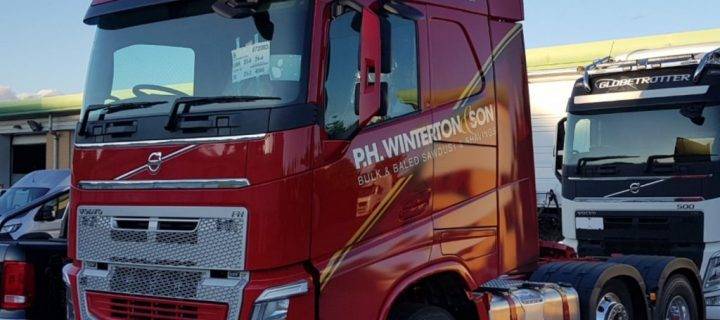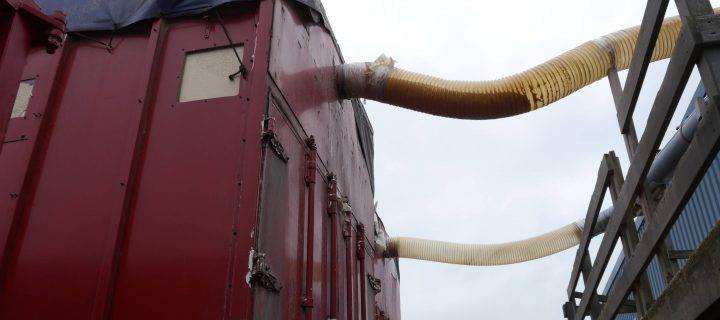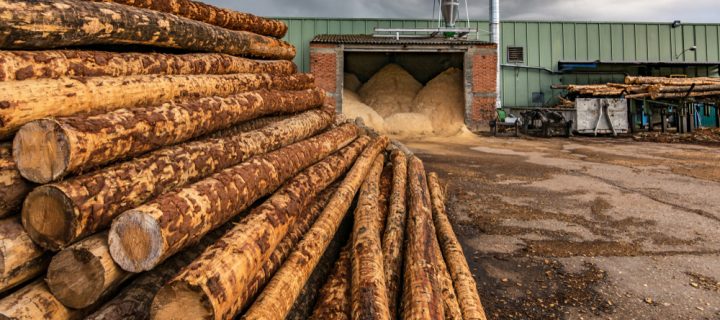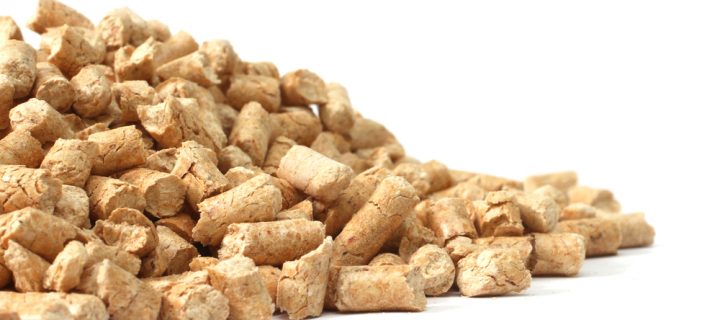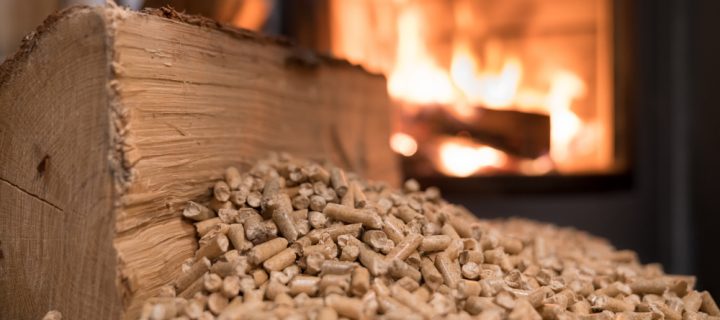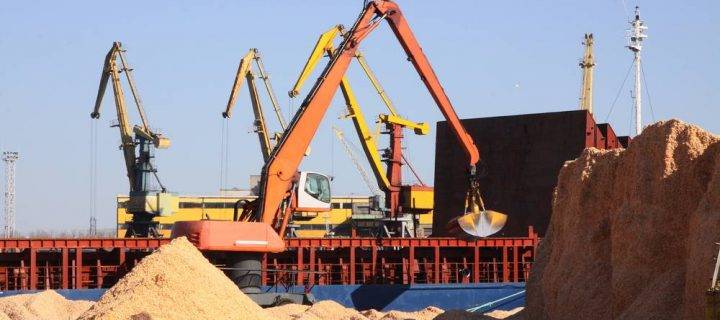At P.H. Winterton, we provide many high quality services. These include providing premium sawdust, shavings and other quality forms of animal bedding. To accompany the fact that we take the greatest pride in supplying quality animal bedding so that your animal remains safe, comfortable and healthy; we care about what happens after you have finished using your animal’s bedding. Sawmill waste and residue disposal can be quite a troublesome task. Especially if you want to make sure you are disposing of the material in a quick, effective and efficient manner. If you have been in this position, by this we mean, have you have access sawmill waste that required disposing of; luckily, we have just the solution for you. We provide an all encompassing sawmill waste collection from Staffordshire. It is not just Staffordshire we supply this service to however. We provide sawmill waste collection to Liverpool, Manchester, Nottinghamshire and many more. So, let’s touch on why you should take advantage of our unique collection service. We Only Use High Quality Waste You might have heard the old adage; ‘one man’s trash is another man’s treasure.’ And we must echo this sentiment. There seems to be a common misconception that because something is old and has been used by someone else, it therefore has no worth or is of less quality. However, at P.H.Winterton we only accept sawmill waste that is of high quality. Our Collection Has Multiple Uses If the sawmill waste passes our thorough and all encompassing evaluation, then it can be repurposed for multiple scenarios. While we have quickly touched upon how the waste is reused for other forms of animal bedding, the sawmill waste can also be used for biomass fuel. Biomass fuel also happens to be one of the many quality services we offer here at P.H. Winterton. It Helps The Environment In 2022, there seems to be a general push to become more environmentally friendly. And at P.H.Winterton we concur. The fact that the waste is recycled and reused is one fantastically easy way to be more environmentally friendly. So, why don’t you consider taking advantage of our sawmill waste collection today. The Collection Process Now that we have established why you should...
Read Moreabout Do You Require A Sawmill Waste Collection in Staffordshire?Sawmill collection may be a service that we provide to you or it could be something that you’re considering. Either way, here at P.H. Winterton and Son, we like to be fully transparent with our customers about where their waste is going. One of the things that separates us from other collection companies is how we use the waste to positively impact on the planet. To find out how your waste is helping the environment, read ahead in our latest blog post. Animal Bedding We believe that all waste should be used rather than wasted. That’s why we recycle leftover sawmill and use it for other purposes. Thanks to our unique and highly reliable machinery, we can create the highest quality animal bedding if the quality is still to a high enough standard. Whether you’re looking for bedding for a cow, sheep, dog or guinea pig, our top quality recycled bedding will guarantee comfort, cleanliness and absorbency. To find out more, read our guide on animal bedding. Biomass Fuel Our equipment also allows us to create the highest quality biomass fuel supplies. In collaboration with Cheshire-based organic recycling specialists, CRJ Services, we have been able to produce around 25 tonnes of biomass per week. Biomass fuel is an organic material which is produced in a renewable manner to create heat or power. We produce two types of biomass fuel using grade A wood residue from our sawmill waste collections. These are split into the following two grades: P16 Grade – A smaller size of wood chip P35 Grade – A grade wood with no contaminants present These can then be burnt in a boiler for industrial heating and electricity. All of our biomass fuel is of the quality and specification required by the specialist sectors that we cater for. Thanks to CRJ’s expert knowledge and specialist machinery, we have been able to be a part of the Government’s Biomass Fuel Supplier List. Therefore, you can rest assured that you will receive the highest quality product, both quickly and efficiently. To find out more about how to use and purchase our biomass products, read our guide. Reducing Our Carbon Footprint By recycling our sawmill waste, not only are we reducing...
Read Moreabout What Happens To Your Waste After Sawmill Collection?Wood waste is the final unwanted product from sawmills plus lumber-jacking and branch pruning. If you are unsure what to do with your unwanted excess timber, don’t worry as P.H Winterton offer a sawmill waste collection service. Industries that contribute to the creation of wood waste include furniture, sawmill, pulp and paper, plywood mills and particleboard mills. For this blog, we are going to explain the different types of wood waste and how it should be stored. The Different Types of Wood Waste There are four main types of wood waste, which are problem wood waste, used wood, scrap wood plus natural wood waste. Examples of problem wood waste are unwanted laminated, wood waste with preservative agents is a blend of problem wood waste and regular wood. Used wood waste consists of deserted wooden building portions, wooden furniture and wood waste from materials like colour pallets. Scrap wood waste is produced in workshops by carpenters, furniture factories, construction sites plus sawmills. Natural wood waste is leftover sawdust and remaining wood pieces from logging activities. Best Storage Methods for Wood Waste Waste collecting bins are pile-up stations of different sizes, shapes and materials which help reduce the spread of litter. Different types of waste collecting include localised containers, centralised bin stations, waste transfer carts or transfer balers and waste yard dumpsters. Localised containers are also known as desk-side bins and are individual refuse bins whose purpose is to increase the efficiency of waste handling. They encourage people to keep their rubbish organised and promotes the recycling of wood waste. Centralised bin stations are placed in strategic points and are the recipients of waste that are assembled from the localised containers. Most furniture workshops have this type of bin in their hallways and corridors which stores wood waste from employees’ work stations. Their main purpose is to receive refuse from centralised stations and move or cut them if it is a transfer baler. They are large containers that carry more waste and are more economical when compared to buying a number of high traffic containers. The refuse yard dumpster is the final designated point to store large amounts of waste and are mostly huge and receive tonnes of wood waste from...
Read Moreabout Preparing for Sawmill Waste CollectionSustainability is more important than ever with the negative effect of climate change on the planet; with wood pellet stoves being the most environmentally friendly heating option. P.H Winterton and Son are the leading suppliers of biomass fuel, with our wood pellets sourced from our sawmill waste collection service. Traditional wood-burning stoves have a number of benefits, using a renewable fuel source that will reduce your heating bills. The most effective pellet stoves can be up to 90% more efficient than standard wood burners because they burn pellets that contain a mixture of sawdust, bark and other biodegradable materials. The level of airborne particulates that the pellets produce is also relatively low. Just like a gas boiler, you can switch pellet burners on and off on-demand giving you an instant source of heat. The burner can be set to your specific requirements, which means you get the most out of the appliance. How Do Wood Pellet Stoves Work? Pellet stoves burn compressed wood or biomass pellets creating a source of heat by slowly feeding fuel automatically from the storage container into the burn tray. A constant flame is then created and monitored to ensure you are getting maximum efficiency. The built-in hopper allows pellet burners to operate autonomously for about 12 hours under full load. One of the main benefits of pellet stoves is how easy they are to use. With automatic ignition, you can be assured your pellet burner will only start burning when needed, which saves you money in the long-term. They will produce very small amounts of ash and chimney creosote that reduces the number of times your chimney needs cleaning. Regarding fuelling your pellet stove, pellets are convenient and cost-effective when compared to other fuel sources. Reasons to Use Pellet Stoves Fuel will only need replenishing once a day, whereas appliances fuelled by wood, which needs regular top-ups every few hours. Pellets release much lower emissions when compared to fossil fuels Pellet stoves are highly efficient due to the even distribution of the heat by an extractor. Get in Touch for More Information If you have any questions about biomass fuel and wood pellet stoves, please do not hesitate to contact us...
Read Moreabout What are the Advantages of Wood Pellet Stoves?P.H Winterton is one of the countries leading suppliers of biomass fuel, which is fueled by wood pellets recycled from our sawmill waste collection service. For this blog, we are going to talk you through how wood pellet stoves work and why you should consider using one. How Do Wood Pellet Stoves Work? Wood pellet stoves do look similar to wood-burning stoves and fireplaces but they are a more environmentally friendly and low-cost heating option. In a time when climate change and environmental awareness is at the forefront of many home and business owners minds, they have become even more popular. The wood pellet that power the stoves look similar to rabbit food and are considered eco-friendly because they are cheap and easy to manufacture. They also have a very low pollution rate. The Mechanics of Wood Pellet Stoves Wood pellet stoves operate with electricity, with pellets loaded into the hopper which is either located on the top or bottom of the unit. The auger is a motorised device which delivers the pellets from the hopper into the burn pot with the auger’s speed determining the stove’s temperature. The burn pot is based in the combustion chamber and is then ignited creating a hotter flame because of how heavily compressed and dense and low in moisture the pellets are. The pot serves as a carburettor for the stove, mixing the air and fuel which creates combustion with the ashes from the burnt pellets captured in an ash pot which needs cleaning periodically. Unlike a regular fireplace, pellet stoves heat a room through convection, which is the transmission of heat that occurs from a forced combination of cool and hot air currents. The convection blower pulls cool air in from the room, passing over the fire in the burn pot and makes the flame hotter enabling the pellets to burn evenly and efficiently. The heated air will move across a heat exchanger, designed to transfer clean air into your home through the room blower. This heat exchanger acts like a furnace when used in combustion because its located in the combustion chamber preventing the outside of the stove becoming too hot. The exhaust blower will push out gases from a...
Read Moreabout Wood Pellet Stoves Explained by PH WintertonSoftwood waste can be quite troublesome in sawmills if not disposed of effectively. This is the reason P.H Winterton and Son offer a sawmill waste collection service. Why is it important to control your sawmill waste? Well, if you work in joinery or on a construction site, we have some handy tips to help control the amount of sawdust you are producing. 7 Ways to Control Sawmill Waste If you are a joiner, use an industrial ventilation system Keep your tools and blades sharp as blunt tools release more sawdust into the air Wear respiratory protection when required Reduce exposure to skin by using protective clothing and gloves Ensure your staff have sufficient training to explain the dangers of wood dust exposure Always practice good personal hygiene by washing hands and face after tasks are completed and before eating and drinking Put your sawmill waste to one side and give P.H Winterton a call to arrange a collection using one of our articulated trailers P.H Winterton operates a fleet of articulated trailers between 30 and 45 feet which are fitted with return air systems and filter sheets. If you are a smaller joinery outfit we also offer a 20-foot hook-lift filter skips which are collected on a regular basis. Our 20-foot open-top waste skips can also be used for off-cuts, wood chips, pallets plus general waste. How Is Sawmill Waste Used? Once your sawmill waste has been collected by one of our team it will be used to create biomass fuel, a renewable energy source. It is an organic material that is produced in a renewable manner to create heat or power. The two most popular components for great biomass fuel come from the farming and joinery industries; they are wood and animal wastes. Arrange Your Sawmill Waste Collection Today If you would be interested in arranging a collection for your sawmill waste, please contact P.H Winterton...
Read Moreabout How Does Sawmill Waste Collection Work?
